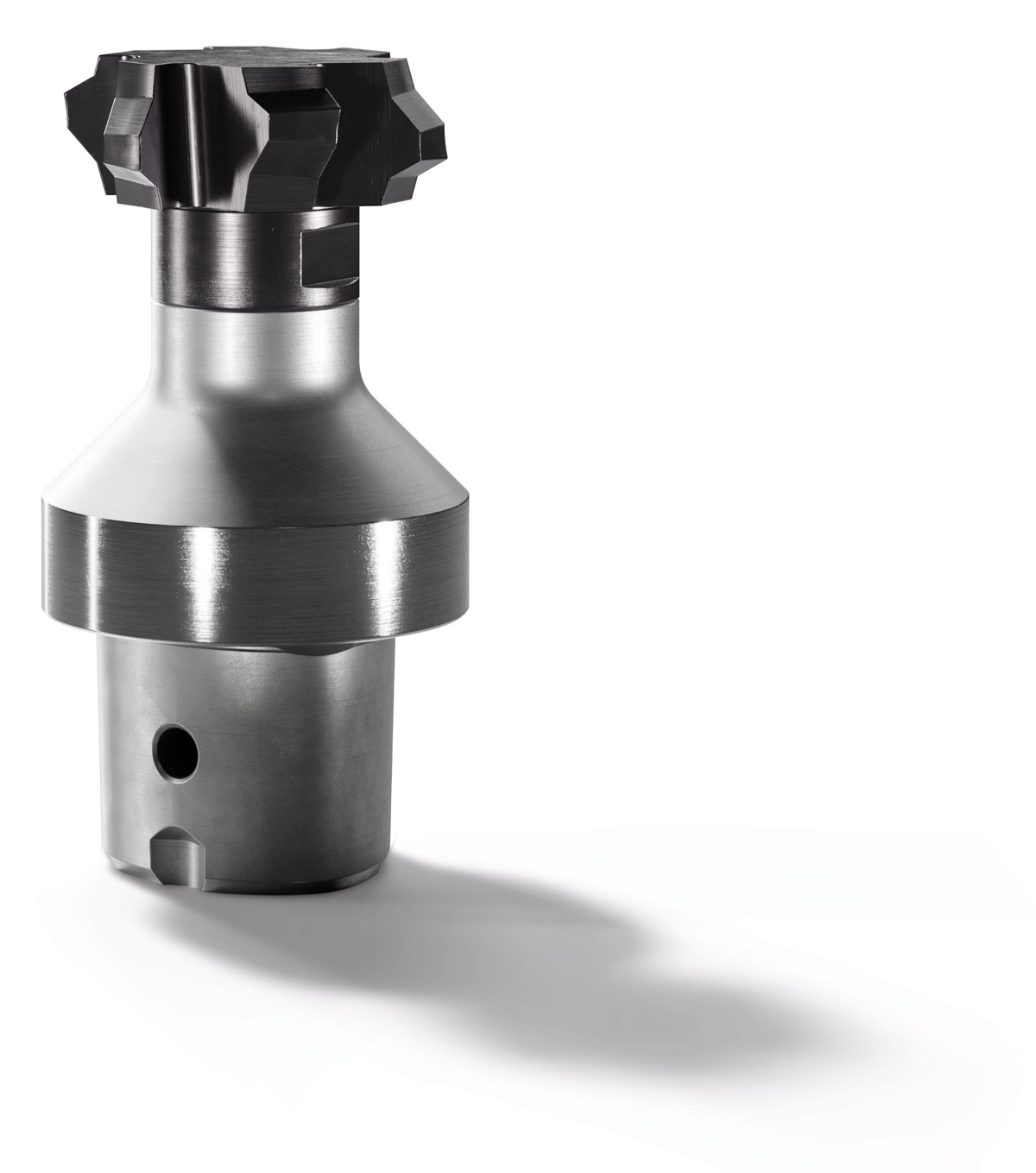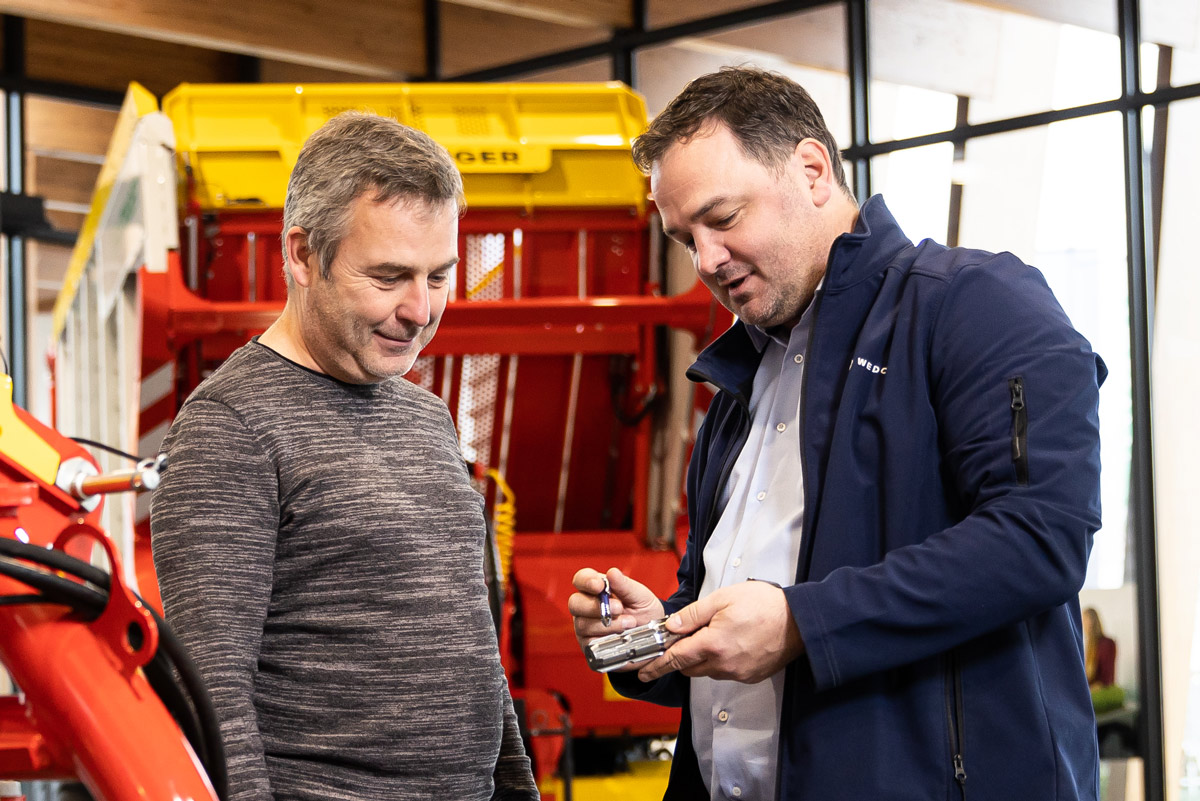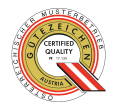10.05.2022
Pöttinger relies on the Horn DG milling system

For milling PTO splines, Pöttinger was looking for a new solution for complete machining on one machine. Together with WEDCO, Horn representative in Austria, and the Horn application engineers, they found the solution with the replaceable head system DG.
Mowers, ploughs, seed drills and much more – Pöttinger Landtechnik GmbH has been developing machines for use in agriculture for over 150 years.
Expertise and a passion for economic solutions have made the family business one of the world’s leading companies in this industry during this time. With a high vertical range of manufacture at the headquarters in Grieskirchen, Austria, the manufacturing specialists are constantly looking for new solutions to further optimise the manufacturing processes.
The PTO shaft is manufactured completely in one clamping.
Tractor implements such as mowers or loader wagons do not have their own drive. For operation, the mechanical drive energy of the tractor must be passed on to the implement. This is done via the auxiliary drive or also called the power take-off shaft. This drive source, which can usually be switched on, is available at an auxiliary output of the tractor transmission. The energy can be used directly via a PTO shaft. The profiled stub shaft, which protrudes from the gearbox, uses splined or involute splines to connect to the PTO shaft of the implement. For operation, the farmer plugs the PTO shaft onto the PTO shaft in axial direction. Rotationally symmetrical locks are used to secure the connection, which can be released easily and without tools.
Reasons for optimization:
Around 25,000 PTO shafts are manufactured in Grieskirchen every year. Pöttinger produces the power take-off shafts as splined shaft profiles with six teeth in the common sizes 1-3/8 inch and 1-3/4 inch. The main material used is steel grade 16 MnCr5, which is also well suited for subsequent inductive surface hardening. “We manufactured the gearing on a hobbing machine before switching to the tools from Horn. Since we are constantly optimising our production processes, we wanted to manufacture the PTO shaft in a single clamping operation,” explains Roland Grafe, Pöttinger’s work technician. In machining, Pöttinger is relying more and more on automated production cells. For unmanned and process-reliable machining, Grafe’s team was looking for a tool solution to mill the gear teeth of the power take-off shaft on a lathe with driven tools.
„We have received precise requirements from Pöttinger as to what the tool must be able to do and what other demands are placed on the machining process“, tells WEDCO technical field representative Alfons Kocher. One challenge was that the individual teeth including a chamfer were to be produced in one infeed. The problem, however, was the limited power of the driven tool. Another point was the possibility to regrind the tool up to four times.

Successfull cooperation: Roland Grafe talking to WEDCO representative Alfons Kocher.
Special cutting edge design
„To counteract the reduced machine performance, Horn’s technicians developed a special design of the individual teeth of the milling cutter with a cut division. The cutting edge has to be very efficient due to the machine power“, tells Kocher. In use, the six cutting edges of the tool always machine the left and right sides of the groove to be milled alternately. The cutting edges are ground with the required tooth profile including the profile of the root circle diameter. The expected hardening distortion of the PTO after heat treatment is already provided for in the design of the tool profile. Furthermore, the clearance angles of the individual teeth are designed so that they can be reground up to four times. Regrinding thus only changes the tool diameter and not the profile of the individual teeth.
HORN chose the DG tool changing head system as the tooling system. The screwable cutter head is centred via a taper face and with a centring pin. This interaction guarantees a change accuracy of the cutting head in the length of +/- 0.02 mm and in the run-out of 0.01 mm. This interface brings several advantages: high stability, stable support as well as the cutting head change without having to re-measure the tool. In addition, changing the cutting head is simple and user-friendly with a torque spanner. The interfaces of the cutting head and the basic holder are made of tool steel. The solid carbide tool cutting edge is brazed onto the tool head. This enables resource-saving handling of the carbide material and thus also enables a more favourable tool price.
Requirements fulfilled
In the field, the HORN technicians’ thoughts on tool selection and cutting design were confirmed. For the six teeth/grooves with a length of 87 mm and a depth of 3.3 mm, the cutter needs a machining time of 85 seconds. Machining takes place in full cut at a cutting speed of vc = 200 m/min. “Actually we are still milling in up-cut mode. With a more stable interface of the driven tool, we will switch the machining to climb milling. Then we can run the tool at an even higher output,” says Grafe. The tool complies with the required tolerances in the milling process. The required surface quality was Ra 3.2 µm. The HORN milling system produces a roughness depth of Ra 1.6 µm. The service life of the cutting edge also exceeds Pöttinger’s expectations. Until the cutting edges are reground, the milling system achieves a service life of 300 PTO shafts, i.e. 1,800 grooves. With the changeover to climb milling, the value can be increased even further.
Two different versions of the tool are already in use in Pöttinger’s production and further projects may follow. „This was Horn’s first tooling project in our production. The technical implementation and the advice provided by Wedco and Horn fully met our expectations. I am looking forward to further projects“, says Grafe.





